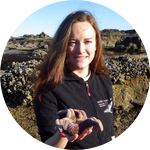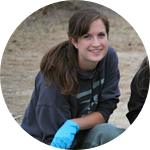About This Project
Nanophyetus salmincola and Ceratomyxa shasta, two parasites of freshwater species, have been associated with significant mortality in juvenile salmon, as well as severe disease in wildlife, domestic animals, and even humans. Dam construction by beavers has been shown to increase biodiversity (variety of species in a system), which, in turn, has been shown to reduce parasites. Here, we will investigate whether beaver dams may provide natural control of these parasites in wildlife species.
Ask the Scientists
Join The DiscussionWhat is the context of this research?
Ecosystem engineers are species that physically modify their habitat. These animals play a significant role in shaping habitat heterogeneity (range of habitats) within their ecosystem. One well-known ecosystem engineer, the beaver (Castor canadensis), drastically alters its environment by damming freshwater streams and rivers. These changes result in increased diversity of habitats available for other species.4,8,9As such, beaver-modified habitats are associated with an increase in biodiversity of both aquatic and terrestrial species.4,9,10 However, while the association between beaver dams and increased biodiversity of macroscopic species has been uncovered, little is understood about the impacts of beaver dams for parasite species that may also share their ecosystems.
What is the significance of this project?
Parasites transmitted by aquatic animals pose significant threats to important fish species; mammals and birds of critical conservation status; and humans and domestic animals.3,7,10 In salmon, the parasites Nanophyetus salmincola and Ceratomyxa shasta have been associated with significant mortality and are particularly difficult to treat due to lack of handling success. In the face of these challenges, beaver-modified environments may provide a natural intervention method for parasitic control. The Dilution Effect is an emerging hypothesis that suggests that more biodiverse ecosystems have lower levels of parasitic transmission.1,5 Here, we will evaluate how beaver dams, and the ensuing biodiversity they create, influence parasite diversity and abundance within freshwater ecosystems.
What are the goals of the project?
Our study will evaluate the impacts of beaver dams on parasite diversity by investigating the following:
1) Is the diversity of vertebrate and invertebrate species different in areas with beaver dams?
2) Is parasite diversity different in areas with beaver dams?
3) What is the relationship between overall macro species diversity and parasite diversity in areas with and without beaver dams?
This study will utilize existing infrastructure from ongoing studies in the Crooked and John Day River, Oregon (PIs Orr and Petersen) to investigate how beaver dam analogs (treatments) and pristine environment (controls) differ in terms of environment, hydrology, and representative species (both parasites and macro-) above and below replicate plots.
For full details of our methods see the “Methods” section.
Budget
Proposed budget items will allow the payment of processing and platform fees associated with administration of this grant; provide materials for the collection of sample species; and cover the costs associated with molecular parasite diagnostics.
Endorsed by
 Project Timeline
Project Timeline
Funding independent stages of the project (i.e. sample collection and physical habitat evaluation) will take place in late August – early September 2018. Molecular diagnostics pend funding and will be completed in late November 2018 – March 2019. Publications on findings will follow in late 2019 - early 2020.
Sep 10, 2018
Project Launched
Oct 31, 2018
Completion of field sampling
Mar 31, 2019
Completion of molecular diagnostics
Mar 01, 2020
Early submission of manuscript
Meet the Team
Affiliates
Affiliates
Heather M Broughton
Heather Broughton is a wildlife disease ecologist, veterinarian, and anatomy and physiology instructor who earned a BS in Animal and Veterinary Sciences from University of Wyoming, as well as a DVM and a PhD in Integrative Biology with a focus in Disease Ecology from Oregon State University. Currently she is an instructor at Oregon State University – Cascades, where she also conducts research examining in-host and community–level associations between parasites, as well as their potential health ramifications for wildlife, domestic animals, and humans. This focus is a continuation of her PhD research, which focused on the impacts of an immunosuppressive virus, Feline Immunodeficiency Virus, for health, immunity, and secondary infections in wild African lions (Panthera leo) of southern Africa. In addition to her primary research, Heather has also been involved with studies characterizing infection prevalence of parasites and pathogens in feral cats; immune impacts of Mycobacterium bovis (bovine tuberculosis) in Cape buffalo; as well as helping with other side projects examining Mycoplasma ovipneumoniae in big horn sheep and river and crocodile health in South Africa.
Brianna Beechler, DVM, Ph.D.
I grew up in Central Oregon enjoying the freedom and space provided to me while living in the Mt. Hood National Forest. This unique childhood, coupled with my interest in nature, led me to a career as a wildlife veterinarian. I have spent time researching a diversity of wildlife species such as bighorn sheep and African buffalo, while living and working in unique places across the globe. My research seeks to understand ways in which having preserved wild areas benefits humans and the earth and how conservation strategies can be used to limit disease transmission.
Lab Notes
Nothing posted yet.
Project Backers
- 3Backers
- 1%Funded
- $35Total Donations
- $11.67Average Donation


